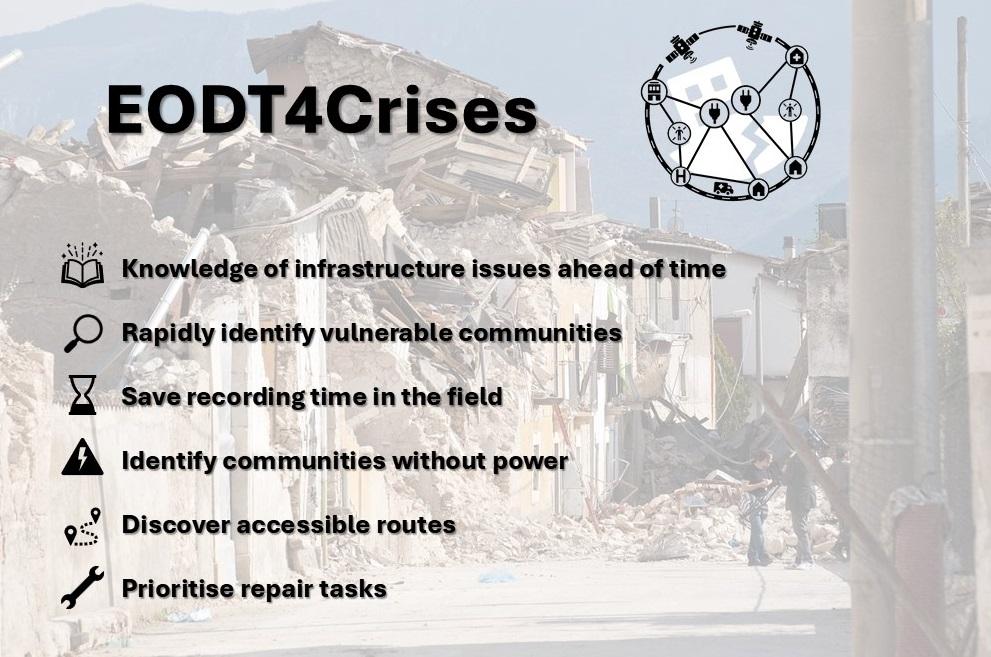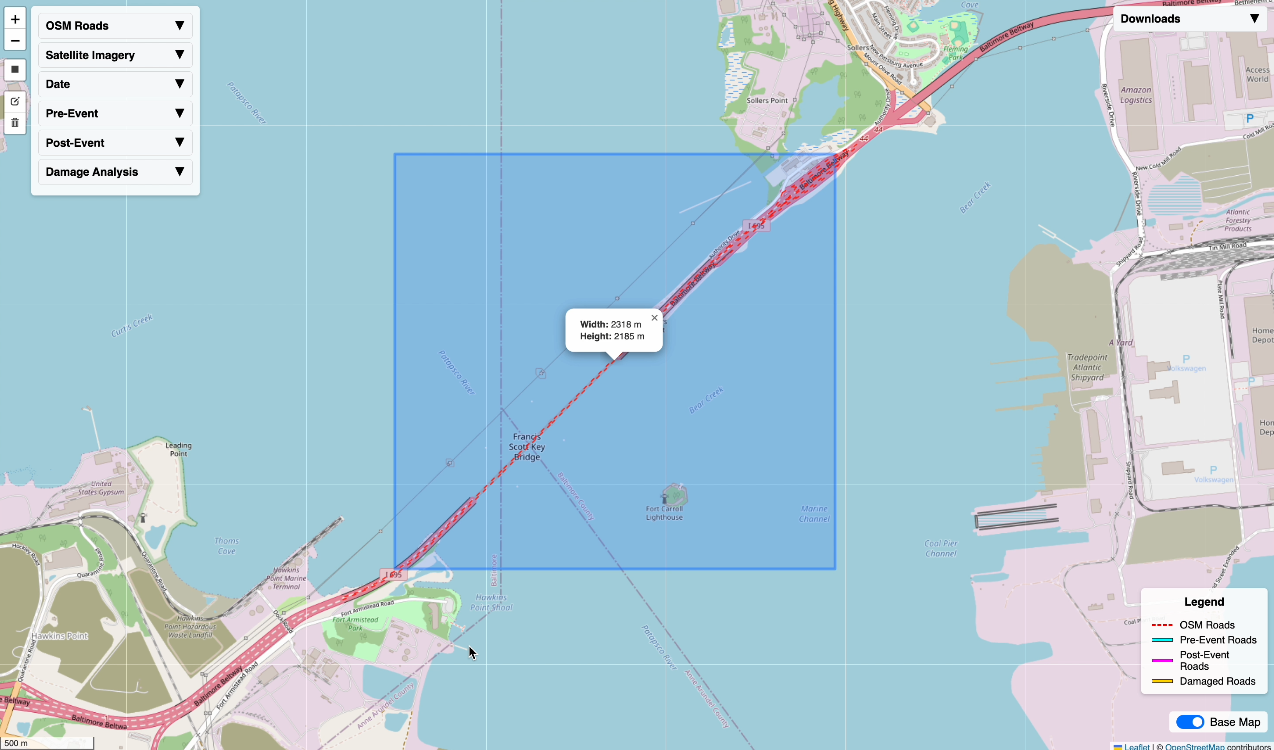
Objectives of the service

Critical infrastructure is vital for powering society. Infrastructure that is resilient to natural, human-caused and technological crises needs a capability that provides proactive insights into its current operating state. This capability, and therefore timely information, is not available to humanitarian support teams who respond to events. This means that they cannot identify road and power network assets that are damaged which hinders their ability to effectively get aid to those who are most in need. The Earth Observation Digital Twins (EODTs) for Crises service will support those working in the humanitarian sector to achieve the following outcomes:
-
Assess the state of critical infrastructure before and during a crisis
-
Create a common operating picture between the office and field
-
Identify areas impacted by power outages and damaged roads
-
Locate damaged power infrastructure assets and identify which assets are the most vital to repair to return power to affected communities
-
Identify both damaged and stable roads to discover routes that can be used to access communities and critical infrastructure, prioritise which roads to repair and support response teams
-
Resolve interdependencies between power and road networks, e.g. traffic light and roadside lighting outages, to deliver equipment and repair teams to affected assets.
Users and their needs
The humanitarian sector’s requirements are diverse and demanding due to the challenging environments in which they work. Users in this sector can work in an office, in the field, and at locations across the globe, in support of communities who are affected by crises. This means that they need to access information about the state of infrastructure in a timely manner to:
-
Bring together different datasets to help them analyse the state of infrastructure, such as roads and power networks
-
Extract information from newly captured satellite, or earth observation (EO), imagery to get an up-to-date picture of what has happened and is happening ‘on the ground’
-
Navigate the costs and procedures for buying and managing commercial EO imagery
-
Simplify these multiple streams of data to create a single common view and provide maps that guide efforts of first responders and emergency managers
-
Perform these tasks in the field, where connections to power and the internet may at best be intermittent
Service/ system concept

The service uses publicly available data on power and road infrastructure, and third-party data if available (e.g. from a power network company). EO imagery will be used to monitor and enhance this data to provide up-to-date information about network form (where is it), function (what it does) and state (is it damaged?). Public data and information about network state are combined to create a ‘Digital Twin’ for each network type. Each digital representation is further improved by the inclusion of vulnerability information relating to natural hazards that affect roads and power networks at specific locations to suggest the likely impact they may have upon them. Users can access the digital representations of power and road networks via a web-portal.
The service allows users to identify where assets are and if they are operational or damaged. Users can create mapping products for post-disaster response or disaster preparedness. These could provide insight about ‘pinch points’, where fixing damaged or destroyed components or features in an energy network or road system will support rapid and optimal repair of other features. Foresight products could identify infrastructure that is most at risk of damage from natural hazards that are characteristic of specific locations.
Space Added Value
Very-High Resolution (VHR) EO imagery is used to establish the state of power and road networks. It captures imagery of the earth at least once a day and has a spatial resolution of 1-metre or better that shows network assets like roads and pylons in detail. In an approach that differs from existing competitors, the network DTs are used to coordinate where and when VHR EO is needed. This minimises the use of an expensive commercial resource to ensure that costs are kept to a minimum. Artificial Intelligence/Machine Learning techniques will be used to extract network assets from VHR EO imagery, which will be optical imagery (like an aerial photograph but from space) or from RADAR data. RADAR is an excellent source of imagery for infrastructure and crisis response mapping, as it creates imagery in all-weathers, day or night, and is excellent at detecting man-made targets.
Current Status

Eleven stakeholder interviews have been conducted with organisations across the humanitarian sector, insurance industry, imagery providers, a UK government department and an engineering company. From these discussions, the pains and challenges of stakeholders have been converted into user requirements that detail the output(s) that stakeholders want from the EODTs.
An architecture workshop held between Helyx and UoP discussed how each DT would be created and integrated using APIs. UoP have since developed an application prototype to detect damage to road networks. Helyx have built spatial representations of power infrastructure across several geographic areas, behind which a knowledge graph is used to model interdependencies between different elements within the network and their interactions with environmental stressors.
In the coming weeks, Helyx and UoP will begin to integrate the DTs and test their combined functionality.
Prime Contractor(s)
Helyx Secure Information Systems Limited
United KingdomSubcontractor(s)





